to warn the people
What if everything is on the line.
How do you warn the public?
How can you motivate people to do hard things because, without such an effort, all will be lost?
These were questions which the US War Department’s propaganda arm, the Office of War Information, confronted during World War II.
For Ben Shahn, an Office of War Information artist, the answer was clear: depict Nazi brutality honestly.
The risk to democracy posed by fascism’s spread required nothing less.
A case in point:
In June 1942, the Czech resistance assassinated Reinhard Heydrich, a high-ranking Nazi official, in Prague.
Heydrich had ‘an iron heart,’ according to Hitler.
He had organized Kristallnachtt and formed the Einsatzgruppe, the Nazi traveling death squads which had murdered Jews and others all across Nazi-conquered territory.
After Heydrich’s assassination, the Nazis retaliated by executing all men in the Czech village of Lidice who were older than fifteen.
The village women and children were sent to concentration camps.
And a few village children deemed genetically acceptable were selected for adoption by SS families.
Lidice was then leveled.
And Berlin announced all these atrocities in a public telegram read aloud on the radio.
So, Shahn got to work.
He reproduced the Nazi telegram, word for word, on a poster.
The words appear beneath an image of a prisoner, handcuffed, who stands in front of a red brick wall.
His head is covered in a shroud.
And the message is clear: this prisoner will soon be executed.
Shahn entitled his work, “This is Nazi Brutality.”
He saw the Nazi obliteration of Lidice as a foretaste of what was to come.
This was the scourge devouring Europe and the American people needed to be warned.
A few months later, Shahn created a poster showing a group of French workmen with their hands raised over their heads.
It was made in response to a decree of the Nazi puppet government in France which compelled the French working class to labor in the German war industry.
And across the top of the poster, Shahn wrote, “We French workers warn you… defeat means slavery, starvation, death.”
And this was true.
That’s what was on the line during the war.
But Shahn’s employment at the Office of War Information was rocky.
He was what would now be called, ‘a bad fit’ and he’d last there for a little more than a year.
The trouble came to a head in 1943, when new managers from advertising agencies were brought in to run the Office.
It was the age of Norman Rockwell, the cover artist for The Saturday Evening Post.
Rockwell’s poster series illustrating FDR’s Four Freedoms with patriotic, nostalgic themes had raised more than $100M for the war effort.
People liked Rockwell’s images.
They made people feel good.
Shahn’s gritty ‘realist’ style with overt political messages made people uncomfortable.
So, his work fell out of favor and Shahn got angry.
Shahn viewed the ad men’s new approach as the selling of the war through slick advertising while harsh messages of the truth would be forsaken.
There are reports that Shahn prepared a poster spoofing Rockwell’s work which depicted the Statue of Liberty holding four bottles of Coke, with the caption, “The War That Refreshes: The Four Delicious Freedoms.”
In the end, the Office of War Information used only the two Shahn posters mentioned here.
The rest of his works were rejected.
Too harsh.
And the dilemma remains.
How do you motivate the public during bad times?
Do you portray stark reality and say, ‘The future of democracy is at stake!’
Or, do you give people a fuzzy, ‘feel-good’ message?
Shahn was not wrong in believing people should confront the truth.
But today’s political ad men, just like those managers at the Office, know that people mostly just want to feel good.
So, skip the outrage.
It’s ‘Morning in America.’1
******************************
I’ll see you tomorrow.
— Brenda
Banner image: Ben Shahn, "The Meaning of Social Security," 1942, a mural created under the New Deal’s Federal Arts Project and located at the Wilbur J. Cohen Federal Building, Washington, D.C.
Slogan from Ronald Reagan’s presidential campaign, 1984.






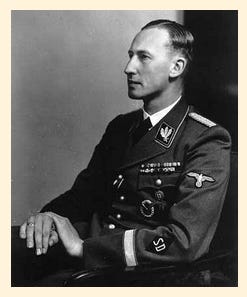

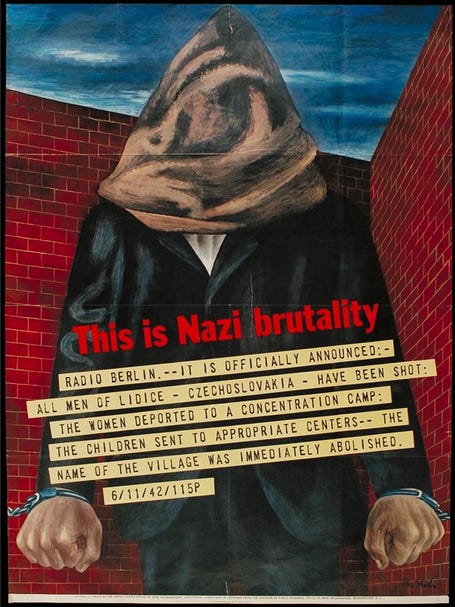
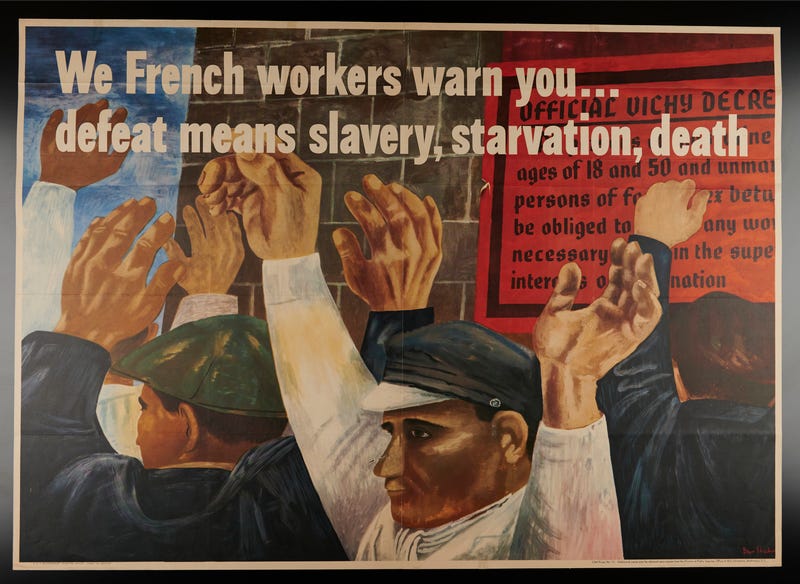
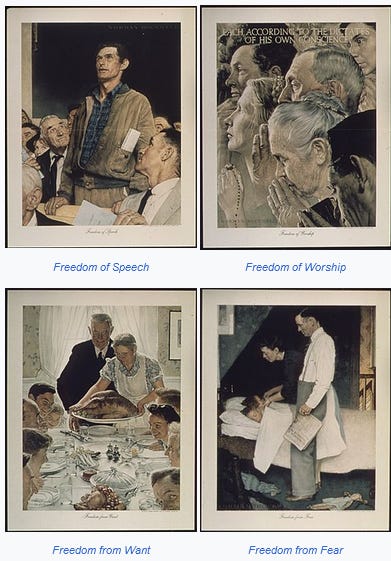
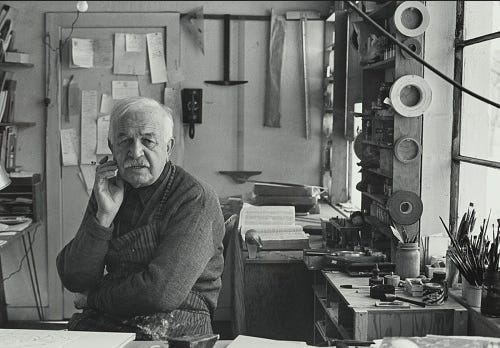


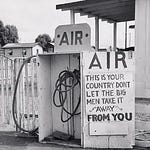
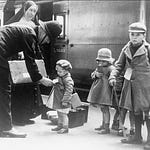
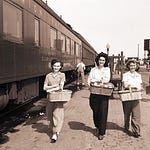


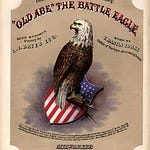

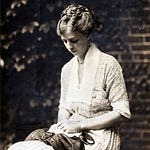
Photo of the Day